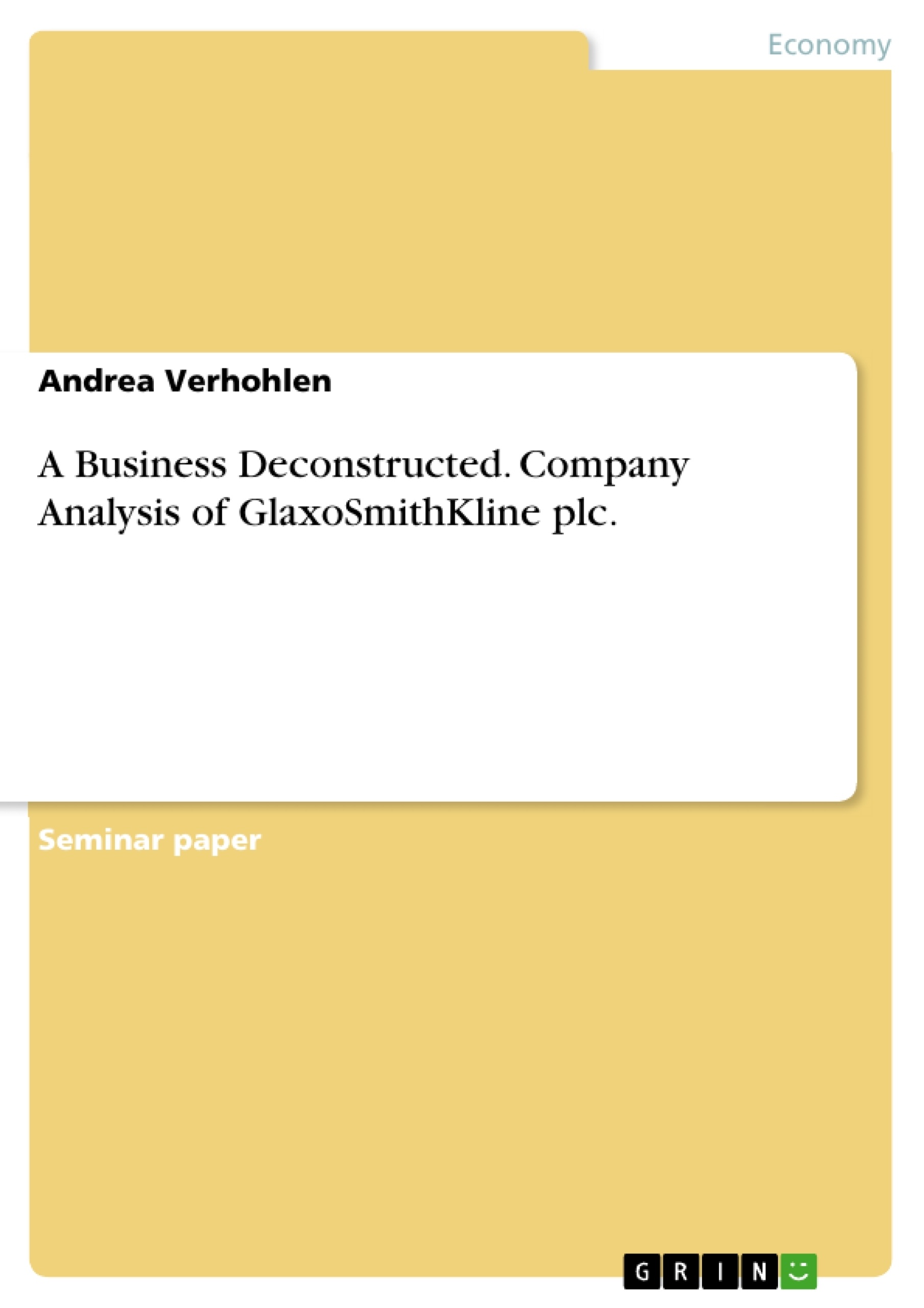GlaxoSmithKline plc. (GSK) was formed in December 2000 by the merger of “Glaxo Wellcome” and “SmithKline Beecham” and is now one of the world’s leading pharmaceutical and healthcare companies. The organisation is headquartered in London and has further production facilities in 114 countries within Europe as well as in Northern America and Asia. Apart from pharmaceutical products and vaccines, health- and sanitary items are also manufactured and sold in over 140 countries. (Annual Report, 2007, p.4) GSK employs over 103,000 people around the world. In 2007, women “accounted for 24 per cent of senior managers and 37 per cent of all managers” while “minorities made up 19.1 per cent of employees in the UK workforce”. (Corporate Responsibility Report, 2007, p.100) The organisation invests in its own research to develop new drug substances. One in six employees’ works in the area of research and in 2007 GSK spent over 13 million pounds every day for R&D. Research efforts are also directed at diseases, which are mainly widespread in underdeveloped countries.
Inhaltsverzeichnis (Table of Contents)
- Introduction
- GlaxoSmithKline, PLC
- Vision & Mission
- Stakeholders
- Stakeholder Theory
- Stakeholders of GSK
- Stakeholder mapping
- GKS's legal form and its implication on shareholders
- Public Limited Company (PLC)
- Shares
- Formation
- Implication on shareholders
- Financial Section
- Ratios
- Horizontal Analysis
- Profitability
- Efficiency
- Liquidity
- Structure
- Investment
- Benchmarking
- Financial strengths and weaknesses
- Recommendation of strategy
- Strategy of GSK
- Strategy
- Implementation
Zielsetzung und Themenschwerpunkte (Objectives and Key Themes)
This assignment aims to deconstruct the business of GlaxoSmithKline (GSK) by analyzing its vision, mission, stakeholder relations, legal structure, and financial performance. It examines the company's commitment to ethical, social, and environmental considerations and explores its strategic direction.- Stakeholder theory and its application to GSK's operations
- The impact of GSK's legal structure as a Public Limited Company (PLC) on shareholders
- Financial analysis of GSK's performance and strategic implications
- GSK's commitment to ethical, social, and environmental responsibility
- GSK's strategy for growth and its implementation
Zusammenfassung der Kapitel (Chapter Summaries)
- Introduction: This chapter introduces GlaxoSmithKline (GSK), its history, its global presence, and its core business activities. It highlights GSK's commitment to research and development and its focus on improving access to healthcare for all.
- Stakeholders: This chapter defines stakeholder theory and explores its application to GSK. It identifies key stakeholders for GSK and examines how the company engages with them, including its commitment to transparency and ethical practices.
- GKS's legal form and its implication on shareholders: This chapter discusses GSK's legal structure as a Public Limited Company (PLC) and its implications for shareholders. It examines the rights and responsibilities of shareholders within this corporate structure.
- Financial Section: This chapter presents a comprehensive financial analysis of GSK, examining its key ratios, profitability, efficiency, liquidity, structure, investments, and benchmarking against industry standards. It identifies strengths and weaknesses and proposes recommendations for strategy development.
- Strategy: This chapter delves into GSK's strategic direction, outlining its implementation strategies and focusing on its commitment to ethical, social, and environmental responsibility.
Schlüsselwörter (Keywords)
This assignment focuses on key business concepts such as stakeholder theory, corporate social responsibility, financial analysis, strategic management, and pharmaceutical industry dynamics. The analysis focuses on the specific case of GlaxoSmithKline (GSK), highlighting its global presence, ethical commitments, and strategic initiatives.- Quote paper
- Andrea Verhohlen (Author), 2008, A Business Deconstructed. Company Analysis of GlaxoSmithKline plc., Munich, GRIN Verlag, https://www.grin.com/document/117209




